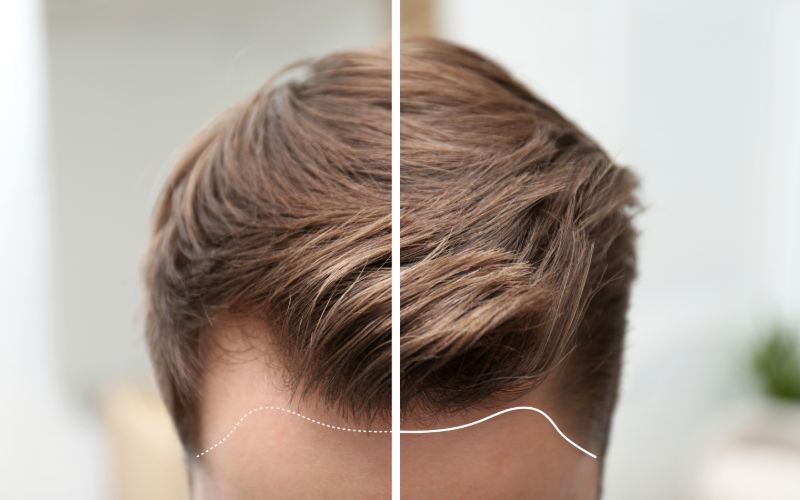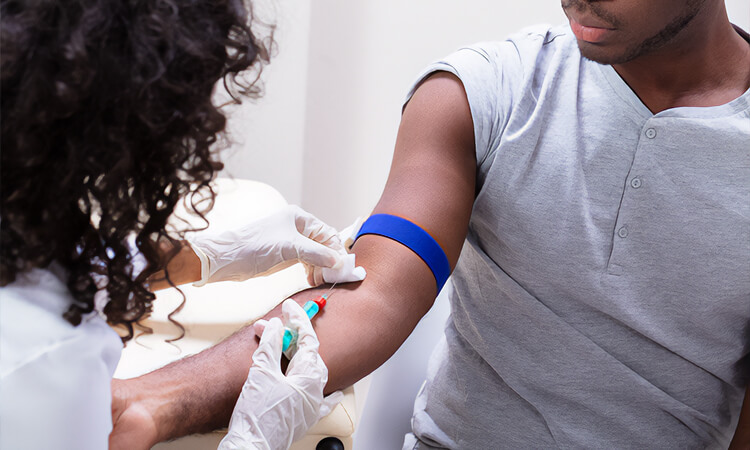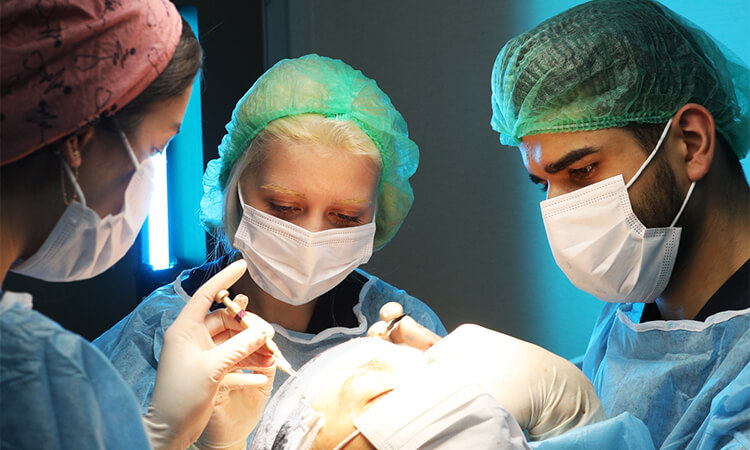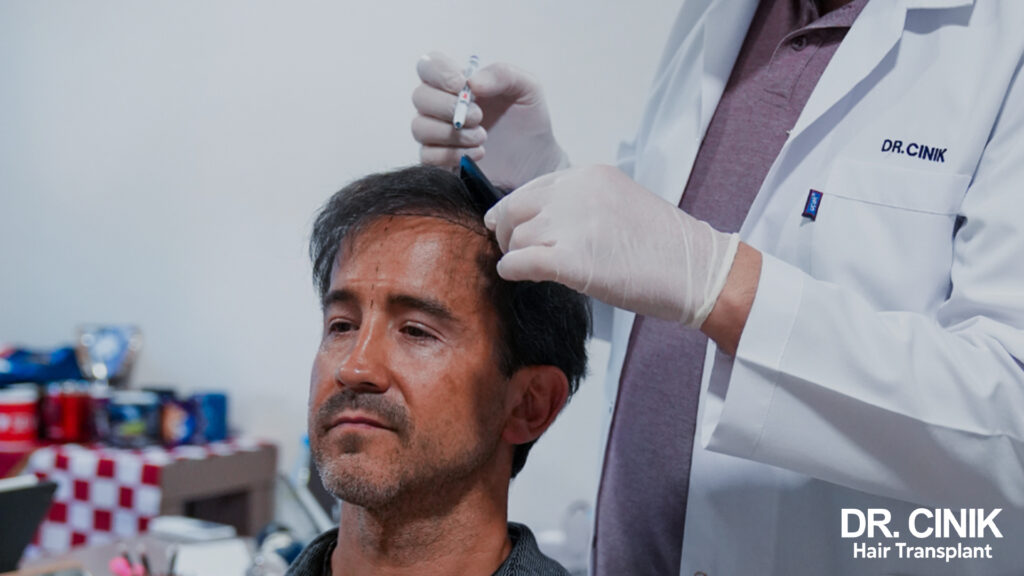A Successful Hair Transplant in 6 Steps

Sommaire
Hair transplants are becoming more popular as their success rates are getting higher, and people trust hair transplants more now. However, given the risks and difficulties related to hair restoration, people want to make sure their operation result will be a successful natural-looking hairstyle.
You might have researched the hair transplant procedure, and many technical or marketing stuff has confused you. In this post, 6 steps towards a successful hair transplant have been discussed in simple words to give you a general idea of what an excellent hair restoration surgery is about.
What Are Steps for a Successful Hair Transplant?
Hair transplants are complicated operations that need a great deal of attention from different people. First of all, the patient should be aware of their role in the success of a hair transplant. The doctor who manages and leads the operation is also critically important. Enough experience and knowledge besides medical credentials would be necessary.
The surgery team, who will be with you during the procedure, also needs a lot of education and expertise to run the operation well. Last but not least, the clinic’s support team should also be sharp and responsible for being with you until you get there: Having dense natural hair.
After selecting the right clinic, your hair transplant will need 6 steps taken to turn out to be successful work. Those steps are:
Pre-Operational Diagnostics:
Hair transplant surgery is a perfect option for gaining natural hair back. However, it might not be the best choice for everyone suffering from hair loss. For obvious reasons, some medical centers do not inform prospective patients if they are not suitable candidates for a hair transplant. Additionally, they give limited information about the procedure and promise some impossible results.
Like every medical intervention, diagnostics lay the foundations for making the right set of decisions. Hair transplants are not exceptions, and diagnosing the main reason for hair loss and future health issues would be crucial before undergoing a hair transplant operation.
Additionally, many patients travel long distances to get a hair transplant done, making the diagnostics process even more critical. It can save extra time and money.
Hair Loss Cause Diagnose
A significant portion of society (men or women) experience hair loss and even baldness before turning 70. Pattern baldness is one of the most common types of hair loss and can be treated by a hair transplant.
Other types of hair loss occur due to some medical conditions such as autoimmunity diseases, hormonal dysfunction, or vitamin deficiency. In such cases, hair transplants should be done if the medical situation has been taken under control.
Suppose you have decided to have your hair transplant done at Dr. Cinik Hair Transplant in the free consultation session. In that case, our specialists will diagnose your hair loss type by studying your medical background and images.
Blood Test
To make sure you don’t have any advanced health issues, which can be causing or exacerbating the hair loss situation, a thorough blood test is needed before making any decisions about a hair restoration surgery. The blood factors studied won’t be the same for men and women. The following factors are among the blood factors studied before a hair transplant surgery:
Blood test items for men before a hair transplant |
Blood test items for women before a hair transplant |
|
|

Donor Area Hair Health
The donor site should be studied and analyzed to determine whether it can provide an appropriate number of healthy hair follicles without being damaged and harvested too much.
The hair transplant doctor would study the density of donor hair follicles and thickness to ensure the nape area won’t be damaged after harvesting.

Additionally, the medical team should consider the number of grafts to cover the baldness while analyzing the donor area. In some cases, body and beard hair follicles are preferred for harvesting as the nape area won’t handle the necessary number of hair grafts for the balding areas.
The Situation in the Recipient Area
The size and quality of the recipient would be analyzed before making any incisions. Some people suffer from issues related to their skin covering the recipient area. It is important to note that healthy hair follicles on the implantation site should be well protected. An experienced surgery team should consider any sign of a problem with blood circulation in the recipient area should carefully.
Professional Planning
Hairline Determination
Hairline design is a critical contributing factor to the success of a hair transplant. A natural hairline fits your age and face well, and it is not too low nor too high. Flat hairlines, which are too rare in nature, look unnatural and artificial and should be avoided. As your hairline is the top recognized part of the hair, it is essential to consider the patient’s needs and comments as well as the experience of the surgeon.
Graft Number Estimation
Natural coverage needs a proper calculation of the number of grafts required for implantation. An optimal density (not too much, not too low) is a key to a great hairstyle. If the frequency is lower than that of the natural hair, others can see the scalp beneath the transplanted hair, and highly dense implantation can cause damage and other problems like necrosis. The surgeon calculates the grafts number by considering the hair loss severity (Norwood scale), patient’s hair type and color, and scalp size.
Harvesting Plan
The hair restoration doctor should determine the hairline based on the number of grafts needed and the analysis done on the donor area (the nape area). If the medical team figures out that the donor area on the scalp cannot provide enough hair grafts to create good coverage, beard and body hair transplant options would be considered.
Graft Distribution Plan
Also known as the Implanting plan, it is a framework to make sure the right hair graft is implanted in the right place. You cannot expect a natural look if the distribution of hair follicles (in 4 clusters) is considered well while implanting. Frontal parts need more density which decreases as we move to the top, towards the crown.
Precise Extraction
Harvesting Distribution
Harvesting hair grafts according to a harvesting plan that puts all necessary factors into account is a very crucial success factor of a hair transplant. The surgeons should precisely follow the extraction plan determined by an experienced doctor so that the donor area would be uniform, and recognizing signs of a harvesting procedure would need a closer look and attention.
No Damage to Skin Tissues
An operator should do the extraction of hair follicles with great attention and expertise. Using precise punches, more minor scars are left on the scalp, and harvesting does not harm the skin tissues and other hair follicles.
Least Scar Left on the Donor Area
With the proper distribution and precise extraction, using the right tools, minimal scarring occurs. Also, after the hair on the recipient area starts to grow, it can easily camouflage the scarring areas. Precise harvesting also minimizes the recovery time of the scars.
Handling Extracted Grafts in Perfect Storage Conditions
Extracted hair grafts consist of 1,2,3, or 4-hair follicles and are very delicate. Handling them, clustering, and preparing for implantation in the shortest time possible is crucial as those hair follicles can dry out and lose their life outside the body very soon.
The ideal storage temperature for graft preservation is 4°C, and the surgery team should maintain the follicles at that temperature to maximize the survival rate and improve the impact of hair transplantation. The follicular units should also be placed in a storage solution.
All considerations aside, the time grafts are kept outside the body is considered the most essential factor. Experienced surgery teams have mastered the hair transplant procedure and can minimize the waiting time for hair follicles to be implanted. Additionally, this waiting time is reduced to a minimum in recent methods such as the DHI method.
Channel Opening and Implantation Precisely
Density Distribution According to the Implantation Plan
The implantation plan, which puts many factors into account, is the roadmap for proper implantation. In a successful hair transplant, channel opening and grafts implantation (only implantation in the DHI method) follow this plan, making sure that your hair will look natural and dense. An optimal density is also a big plus for a hair transplant surgery.
Higher than usual and lower than usual densities do not look natural. An experienced surgeon can recognize the optimal number where additional hair follicles concentration won’t be necessary.
The Right Angle of Channel Opening
The commonly recognized difference angle between hairs below the skin and hair exit angles above the skin is 40°, which does not have to be the same for everyone. People who have hairstyles that need combing their hair from the front to the back their entire lives may notice that the angle has expanded a few degrees.
In contrast, those who have combed the opposite way round might anticipate the angle to shrink. As a result, the doctor conducting the surgery must have carefully examined neighboring hair follicles.
The Direction of Hair Follicles Implanted
Another essential thing to consider is the direction of the hair follicles. At the frontal hairline, hair grows forward and horizontally, with a small downward deviation from the top to the side. Only an experienced hair transplant team can ensure a positive outcome when dealing with hair growth on top of the head, which is frequently more challenging to assess.
Post-Operative Care
Wash
Washing the transplanted hair properly is of high importance, having difference with regular hair wash. The first wash, which should be done at the hair transplant center, is pretty tricky. Your hair transplant center should provide you with special washing instructions and specialized shampoos to ensure your recovery period is smooth.
Supplements and Equipment
After a hair transplant surgery, the donor and the recipient areas need special care to heal and recover soon and help transplanted grafts nourish and burgeon to turn into healthy hairs. A professional clinic provides patients with supplements and care equipment to ensure that high-quality surgery will turn into a successful hair transplant.
The hair transplant center should provide you with high-quality materials from shampoo to vitamin tablets, healing gel, and special pillows.
Aftercare (by the Patient)
Hair transplant is a long journey that does not finish with the surgery itself; in fact, it starts with the surgery. To make sure the surgery would develop a natural hairstyle after the transplantation, the patient should also adopt a lifestyle in which they avoid some harmful routines to the transplanted hair.
The hair transplant center will give instructions, but it is the patient’s job to follow some rules for a short period.
A 7/24 support team should be available for the patients to help them with possible difficulties and complications to answer any questions as soon as possible.
What Is the Success Rate of Hair Transplants?
No medical intervention has a complete success possibility, nor do hair transplants. However, due to technical and scientific advances, the hair transplant success rate is above 90%, which is even higher in advanced hair transplant centers like Dr. Cinik Hair Transplant, enjoying almost 97% success rate.
Hair transplants have many success factors, making it impossible to get totally under control.
That’s why experienced surgeons like Dr. Emrah Cinik have created a very smooth and controlled procedure to ensure all the risks that can jeopardize the success of a hair transplant are minimized.

The Patient Is Also Important!
Hair transplant is a journey that starts with surgery! The patient needs to take care of implanted hair follicles and the donor zones to ensure all the efforts done would result in a high-quality hairstyle. Using the supplements provided by the hair transplant center, washing hair properly, sending images of update steps to the post-op team, and other aftercare procedures are done by the patient.
That’s why professional hair transplant centers put a lot of effort into educating the patients. If you are attempting to have a hair transplant done for you, do not forget to study well about the aftercare procedure and learn about dos and don’ts well enough.
The Most Successful Hair Transplant Technique
Among hair transplant procedures, FUE procedures are more successful than older procedures like FUT. However, the family of FUE hair transplant procedures has evolved. The DHI method and the Sapphire FUE method are the new innovative procedures that have raised the bar for the FUE method even further, increasing the procedure’s success rate.
Hair Transplant Success Stories on Social Networks Like Reddit
It is difficult to find honest reviews of hair transplant clinics among thousands of marketing-oriented content on the internet. However, You can use several communities like the Hair Transplant community on Reddit or Quora platform to find honest reviews of hair transplant clinics.
Such communities, despite excellent regulative supervision, are full of fake accounts and marketing content. It is vital to have profound filters to see the results that are truly honest and real.
 en
en



